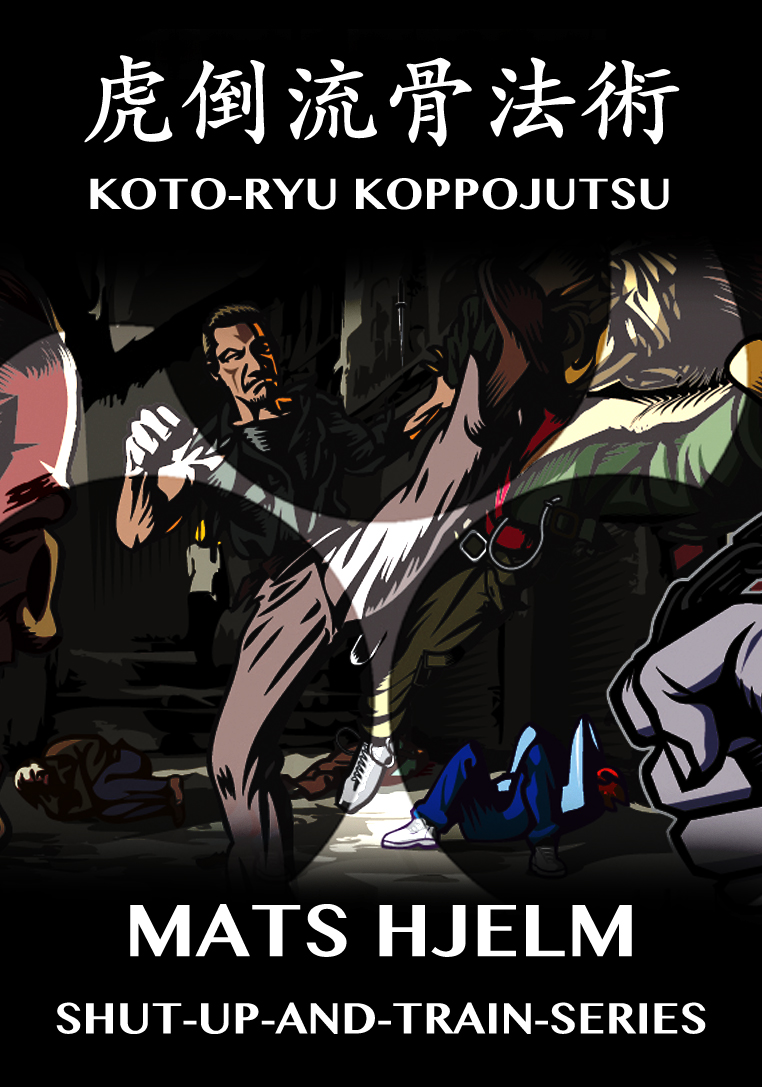Why is There an Ox Cart Wheel in the New Bujinkan Honbu Dojo?
From Bujinkan Santa Monica by Michael
 |
| Two shishi dogs and goshoguruma in the new Bujinkan Honbu Dojo. photo by Michael Glenn |
I laughed when Noguchi Sensei forced open the mouth of one. As the jaw came unhinged, Noguchi bent over to see if there was anything inside. Then he put his hand in and pretended the dog was biting.
The third object was a large wheel. I turned to my friend Paul Masse and said it looked like a dharma wheel. But I was ignorant.
I look at my students and I know immediately when they understand and when they don’t. It’s natural as a teacher. And Hatsumi Sensei does the same thing. I don’t just feel his attention, I literally see him watching. It is like we are all travelling down the road he built.
He is patient about it. He knows if we stay on the path, it will all work out. That night he even told us,
“I’m giving you some hints so that you can practice on your own. Don’t worry if you can’t do it right away because you won’t be able to do it right away.”Well, maybe this wheel is a hint of some kind. I asked Senou, Noguchi, and Nagato Sensei about it and they all said 御所車 goshouguruma. Which is the ox-cart the wheel comes from. In the Heian period, noblemen rode in ox carriages. By itself the wheel is sometimes called 源氏車 genjiguruma.
That is because the wheel is a crest for the Genji (or Minamoto) family. You may have heard of The Tale of Genji. In Japan, an indication of your refinement and culture is to employ motifs drawn from literature that connect to your situation or frame of mind or to the occasion. And you need sophisticated understanding of Japanese culture to be able to identify these motifs. So this wheel often refers to a scene from chapter 9.
In this scene, Hikaru Genji was participating in the purification ceremony of the priestess of Kamo Shrine. In the middle of the crowd who gathered to see him, an argument broke out between the Lady Aoi and the Lady Rokujou about the positions of their ox carriages to have a better view of Genji.
Some people act like this in the dojo! Positioning themselves to gain favor of the teacher. But I don’t think that is the message Soke intends by placing this symbol in the Honbu.
In tonight’s class, Hatsumi Sensei used his fingers to attack as usual. But he said something about this that transformed my understanding of how he uses them. He told us,
“You’re not actually using the fingers. You’re using them as a point, a fulcrum to move around.”This is like the hub of a wheel! And the fingers could be spokes. I never considered it this way before so I will study it when I arrive back home.
If you want to follow my studies, I include many more details in my personal training notes. You can subscribe here
Like the rolling of wheels, Hatsumi Sensei kept on us about the importance of continuous connection. A wheel must have this kind of connection with the road. If you break that connection, the wheel is useless. Well, Soke told us a similar thing happens when you attack,
“Anybody can just attack, but it takes more skill to control. Everyone tries to attack and that’s why they make mistakes. If you just try to control it leads to the next one. I keep teaching this year that it’s connected to the next move, the next one. Because if you stop right there that’s when you die.”He next did muto dori against a rokushakubo strike. He told us,
“It's all connected. You have to use the kukan and move in it. It has to be all connected and continuous."And then he took up 澄水之構 Chōsui no Kamae against a sword. That’s when he revealed,
“Because it’s all connected like this, you take his will, his desire to fight. It’s not about attacking men or dou or specific kyusho. Know the importance of the intervals in the kukan and the connection between those.”Well, I would add, that you should know the importance of visiting the Honbu dojo and your own connection between you and your teachers. Every trip makes me happy that I have set my wheels on this road. I hope you can travel along the path with me.











